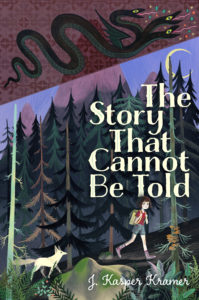“Why We Need International Books in the Classroom”
After finishing college, my husband and I packed two suitcases each, sold everything else that we owned, and bought plane tickets to Japan. Our plan was to teach English for a year or two and then move back to Tennessee, but we wound up loving life abroad so much that we lived outside Tokyo for almost five years.
For much of my time in Japan, I worked at an international elementary school, where I taught children from all over the world. My classroom was made up of students from Sri Lanka and Denmark and Korea, Canada and Sudan and Poland. Along with a typical American curriculum (math, P.E., language arts, etc.), I was responsible for making sure my class of 15-20 ESL students learned how to speak and read and write and listen in English—a second (or third) language for almost all of them.
It was a challenge, of course, not only to communicate, but to create an environment where everyone felt comfortable celebrating their differences. Unfortunately, sometimes the American textbooks themselves complicated this problem. (Think of how often things like currency and sports and apparel are referenced just in simple math worksheets.) Finding educational resources that represented the diversity of the students in my classroom—even just a fragment of it—was difficult.
Because of this, more often than not, I turned to literature to address the diversity gap in my classroom’s curriculum.
For my students in Japan, bringing books with an international setting or international characters into the classroom helped to make everyone feel more welcome. Though we were a mix of varied beliefs and colors, traditions and clothing and languages, the books we read helped us learn about each other, which in turn created a more respectful and joyful environment.
But this sort of magic isn’t reserved for an international classroom.
Now, back in the U.S., I teach college English in my home state, and I have my students read texts written by diverse authors from all over the world. Though I occasionally teach a special course composed of all international students, the majority of my classes are largely composed of white Americans who’ve never left the country. (As of 2018, over 75% of the students at my university were white and less than 2% came from outside the U.S.)
In my international classrooms in Japan, the diverse books that I brought to our shelves provided ways for my students to see themselves and their peers in the stories we read. Now, for many of my students, however, such texts require that they learn about cultures with which they’re completely unfamiliar. This forces them to see the world through perspectives they’ve never encountered and, ultimately, open both their minds and their hearts.
Bringing writing with international settings and characters into the classroom, especially writing by diverse authors, is beneficial at any grade level and to any group of students. It teaches readers of all ages that the world is bigger than what’s outside the window—and that people are still people, wherever you go.
The Story That Cannot Be Told
Author: J. Kasper Kramer
Published October 8th, 2019 by Atheneum Books for Young Readers
About the Book: A powerful middle grade debut that weaves together folklore and history to tell the story of a girl finding her voice and the strength to use it during the final months of the Communist regime in Romania in 1989.
Ileana has always collected stories. Some are about the past, before the leader of her country tore down her home to make room for his golden palace; back when families had enough food, and the hot water worked on more than just Saturday nights. Others are folktales like the one she was named for, which her father used to tell her at bedtime. But some stories can get you in trouble, like the dangerous one criticizing Romania’s Communist government that Uncle Andrei published—right before he went missing.
Fearing for her safety, Ileana’s parents send her to live with the grandparents she’s never met, far from the prying eyes and ears of the secret police and their spies, who could be any of the neighbors. But danger is never far away. Now, to save her family and the village she’s come to love, Ileana will have to tell the most important story of her life.
About the Author: J. Kasper Kramer is an author and English professor in Chattanooga, Tennessee. Her debut novel, The Story That Cannot Be Told from Simon & Schuster/Atheneum, published on October 8th. You can find her online at www.jkasperkramer.com and on Twitter @JKasperKramer.
Thank you so much for this guest post looking at how perspective and a worldly view shape outlook!



1 thought on “Author Guest Post: “Why We Need International Books in the Classroom” by J. Kasper Kramer, Author of The Story That Cannot Be Told”